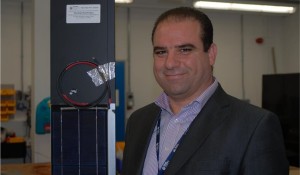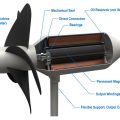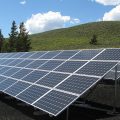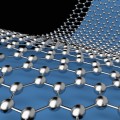
New Hybrid Solar Panel Roof Slashes Energy Bills
— September 28, 2015Scientists at Brunel University London have designed a new hybrid roofing system which could halve energy bills in new homes. The patented new system harnesses a unique mixture of technologies to pre-heat domestic hot water for radiators, baths and showers while also generating electricity. More than half of domestic energy use in the UK is to heat water.
At its heart is the use of heat pipes – super conductors of heat energy – found in high tech devices from PCs to the International Space Station where they prevent it from melting in the heat of the sun on one side and freezing in the vacuum of space on the other.
Dr Hussam Jouhara of Brunel’s Institute of Energy Futures, who led the British team which developed the new system explained: “As a professional engineer with a long-term research interest in heat pipes I could see many advantages in applying this technology to a renewable energy system”.
“Until now there was no system which fully addressed all the technical and practical issues that face making an entire building’s roof a solar-powered generator of both heat energy and electrical energy.”
Heat pipes seemed to Dr Jouhara an obvious solution to a major technical issue with solar cell or photovoltaic (PV) panels used to generate electricity. “PV panels have an inherent challenge to the engineer,” he said. “The more intense the sunlight the more electricity the cells will produce but only a fraction of the sun’s energy can be turned into electricity.
“So the sunnier it is the more of that unusable energy hits the cell which, in turn, heats it up. As PV cells heat up their electrical generation ability is degraded. Heat pipes, in this case, constructed in flat panels 4m x 400mm, will whisk that away to heat domestic hot water.”
In proof of concept tests, PV cells cooled by Dr Jouhara’s methods outperformed identical panels by 15 per cent. And rather than being wasted, almost the full spectrum of energy from the sun is harnessed.
The new system also addresses a wide range of practical issues in installing solar panels in new properties. Attempts to integrate installing solar panels with conventional roofing techniques have a poor track record.
“What was needed was an engineered, systems approach,” said Dr Jouhara. “Our solar panels are PV coated for the most southerly-facing aspect of the roof and are designed to clip together as a weather-tight roof as simply as clicking together laminate flooring.
“When we constructed our test roof using standard “off-the-shelf” roof trusses, tradesmen were able to quickly and easily screw together the panels with no extra guidance than a simple set of written instructions.
“The heat pipe technology also turns the biggest downside of integrating solar panels into conventional roofs into a positive.
“Currently the panels would get hottest in the summer and roofs need to be designed to dissipate that heat. Simply insulating the house below is not a good solution as that simply traps it driving up the PV panel temperature and further lowering its performance. With our system there is no waste heat.”
The solar roof is now undergoing extensive further trials at the Building Research Establishment (BRE) in Watford where a prototype is powering a standard UK three-bedroom detached house. And already there has been one unexpected finding. “Our flat heat pipes are so efficient that they can actually capture the energy from early morning dew evaporating off the trial roof,” added Dr Jouhara.
The costs of the system have yet to be evaluated, but if the ongoing trials continue to show the benefits as demonstrated to date, then it would be beneficial to the U.K.s energy requirements and environmental policies for the Government to readdress it’s cutting of the FIT scheme for solar power. Perhaps in light of the additional benefits stated and the previously reported (21/09/2015) new model for assessing power requirements or Exergy, the new energy policy should be more holistic in its approach to domestic energy requirements.
Picture:
Dr Hussam Jouhara with his prototype hybrid solar panel.
(Contact information can be provided to SeaStrata Online subscribers on request.)






Leave a reply
You must be logged in to post a comment.